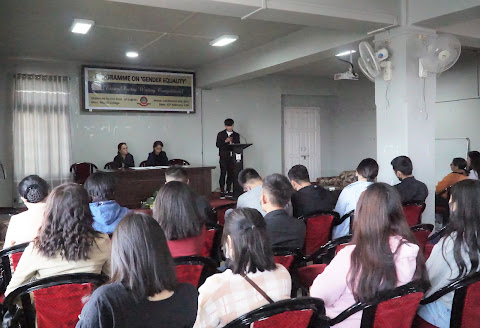How many young people have sat here through the years
patiently listening to countless confusing lectures,
or losing the battle against heavy eyelids
as a teacher drones on on a sweltering summer's day,
or in the back row carrying on a whispered conversation
with a friend under cover of an open textbook
propped up on the table,
or struggling through an exam
to earn that coveted degree.
Where are they now, those generations of young learners,
who have moved on to take their places in the world -
clergymen with flocks to lead to heavenly destinations,
politicians, officers, media persons, entrepreneurs, educators,
some in distant, far-flung villages,
some dead and at slumber beneath the earth,
some fathers and mothers with offspring of their own
coming to sit at these very same tables.
This old table, once smooth and new, gleaming with fresh paint,
now decrepit and battered, scarred with scratches,
and marked with memories of people and time.
Zualteii Poonte (official name A. Hmangaihzuali Poonte) graduated with English Honours in 1981, completed her MA from NEHU Shillong in 1983 and began working as a college teacher in 1984 at Zirtiri Women's College. In July 2001, she joined the English faculty of Govt. Aizawl College. She enjoys creative writing and translation work, and has had a number of prose and poetry writings published in various national and international anthologies.










